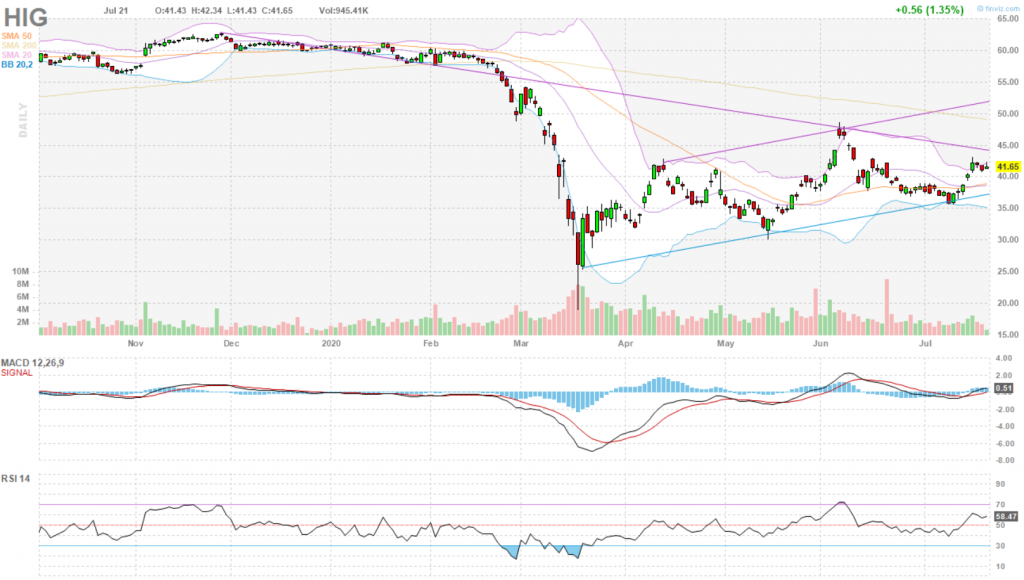The COVID pandemic has caused a myriad of problems other than just the health toll on its victims. It has slowed or reduced:
- economic activity because of closure orders
- travel with companies completely halting business trips
- business office rental income as more closures are enforced
- insurance companies premiums and may be forced to increase claim payouts
Insurance companies make money by collecting more in premiums than they pay in losses and overhead expenses known as the combined ratio (CR). They are being hit from both sides of this equation.
Disaster are usually regional, not national. The premiums collected throughout all the regions help pay the claims submitted. However, with this recent national public health disaster companies are being forced in some cases to reduce premiums and may be forced to payout ever-increasing claims.
As we get closer to earnings season this could cause a perfect storm for insurance stocks.
One stock to watch is Hartford Insurance (HIG) which generates about 49% of its revenue from commercial insurance. Group benefits and personal insurance accounts represent 28% and 16% respectively.
Its CR for the first quarter of 2020 was 99.1 up from 96.1 for the same quarter in 2019. Watch for this to decrease because March-end results were reported as the quarantine was just getting started.
Many businesses like restaurants, retail outlets, and service companies have closed since then and their premium payments have ceased.

As of this writing, HIG is $41.66 and down slightly. If second-quarter earnings reported July 30 miss projections, then there could be a significant drop in price. HIG, Chubb (CB), National General (NGHC), Allstate (ALL), and Progressive (PGR) all missed earning last quarter and likely will do the same this quarter.
The moving average convergence divergence (MACD) for HIG has crossed and the relative strength index (RSI) is nearing overbought. The current price is above the 20 and 50 simple moving averages (SMAs) and is above the second standard deviation on the Bollinger Bands.
With these fundamentals and technicals there is a setup for a major drop if earnings do not meet expectations. With support at about $30.50 as a possible destination target.
Protect your investment
You can use options as a form of your own insurance against a steep drop in the underlying price. As a conservative approach, you can purchase insurance of buying an at-the-money (ATM) July 31 straddle.
You could also simply buy a put at the same level to give you some protection, and then sell it back if the price moves higher.
A more assertive play would be to sell a $40 July 31 call for about $2.40 against shares that you already own which lowers your cost basis by the amount received from the call premium.
If the strike closes in-the-money (ITM), you can buy-to-close or let the call expire. The latter will pay you $40 for the shares called.
If the shares are out-of-the-money (OTM), you will be able to sell another call the next option period and receive more premiums for those stocks reducing your cost basis even further. You can continue to do this until you decide to let them be exercised.
A company like Hartford or Chubb probably won’t go to zero, so the stock price will be depressed for a while. Insurance companies will raise premiums over the coming years to offset any of the losses and as we finally get out of the pandemic.
Their earning numbers will start to meet or exceed expectations and you can then sell puts to take advantage of the upswing. But for now, you can protect your stock portfolio by buying or selling your own insurance.


